► The most leftfield sports car on sale
► Go-anywhere buggy looks, sports car punch
► CAR magazine’s full Ariel Nomad 2 review
Ariel Motors caters for a very discerning customer: one who looks at things differently, who admires bespoke engineering and – let’s face it – is probably no shrinking violet. Because you’re not going to consider an Ariel Nomad unless you are open-minded, a lateral thinker and seeking new automotive thrills. It’s a little bit bonkers, as well as brilliant.
The small team of inspired engineers in Crewkerne, Somerset, have built around 200 Nomads since 2016, making the go-anywhere buggy way more exclusive than most Porsches or Ferraris, even the limited-edition series. And there’s still strong demand for Ariel’s think-different sports car; if you place an order today, you might just get yours in late 2026 or early 2027.
Which is why they’re building a new one. Despite appearances, the Ariel Nomad 2 is all-new, with only three shared parts: the fuel filler flap, the pedals and the steering column are carried over. It may look similar, but this brings a very different flavour of scaffolding.
At a glance
Pros: So, so good; engineering purity; a thrilling drive; outrageous performance; go-anywhere chops; personalisation; relative value
Cons: Not for shrinking violets; still a faff to get in and out
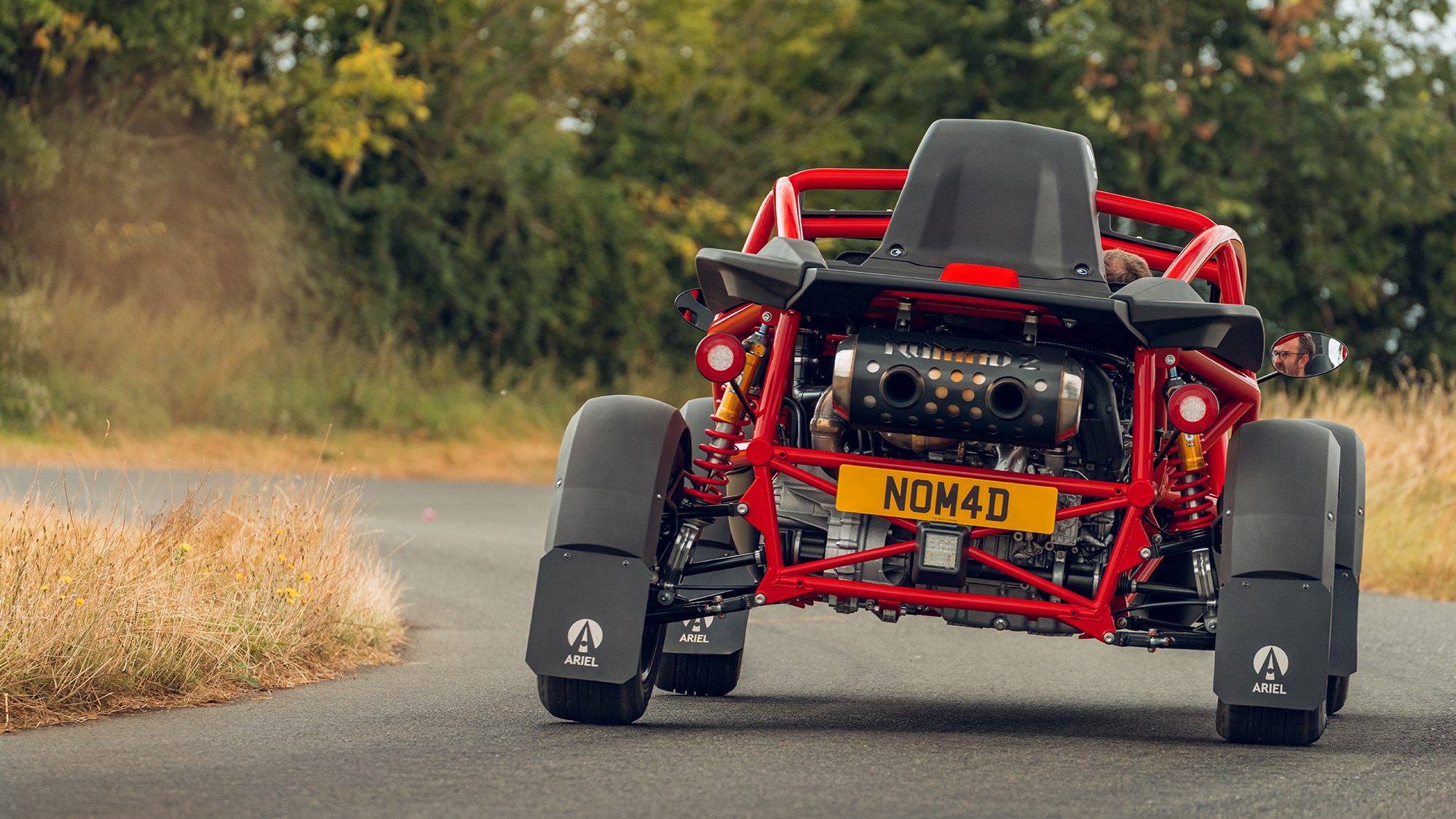
What’s new?
The original Ariel Nomad was like a bolt of lightning when it landed in enthusiasts’ circles in 2016: a new breed of performance car that offered extreme performance on road and off – and arguably seven years ahead of the recent crop of muddy supercars like the Porsche 911 Dakar and Lamborghini Huracan Sterrato. That’s what a nimble organisation that’s totally tuned into its customers can do.
They’ve listened and made the new one similar, but better in most regards. The tubular chassis is entirely different, with a larger-diameter steel tube of up to 63.5mm in the strongest places to boost torsional rigidity by more than 60% compared to v1. Crucially, they’ve engineered the aperture through which passengers enter to make it considerably bigger, which we’ll come back to.
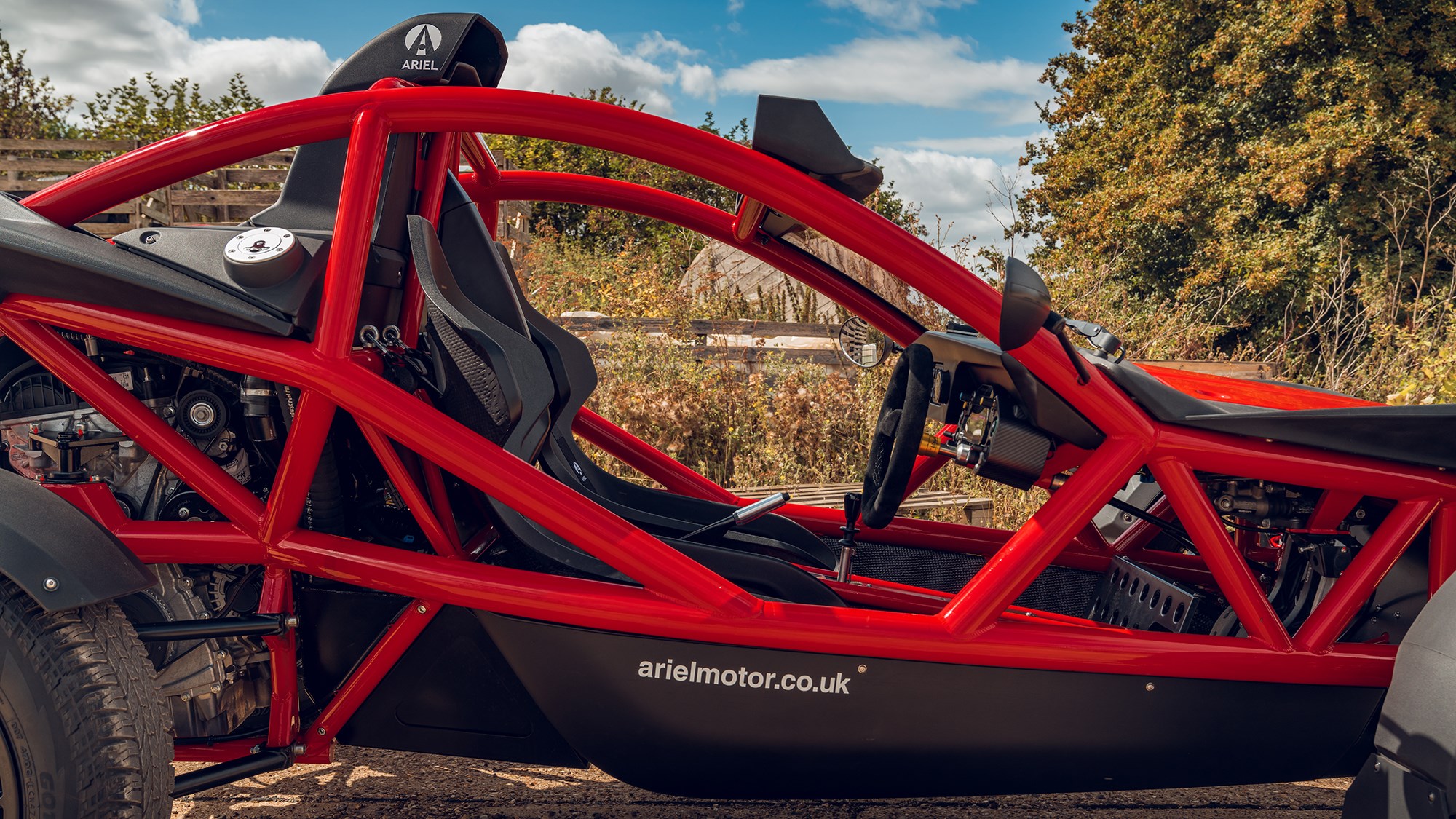
The old Honda VTEC engine has been dropped in favour of a turbocharged Ford 2.3 from the Focus ST, which is more tuneable. ‘It’s easier to drive off-road,’ managing director Henry Siebert-Saunders tells us. ‘In the VTEC, everything happened at the top end, whereas this four-cylinder Ford engine has much better torque low down. It’s exactly what you want when you’re off-roading.’
Attached to the new steel frame, made by Arch Motors in Huntingdon, is a revised double-wishbone suspension set-up with new geometry, designed to provide thrills on road and off – as well as the occasional foray to a trackday circuit. It’s this spread of ability that marks the Nomad out. There really is very little like it out there, and you can spec your car to match your personal requirements, dialling up the on-road ability or off-roading hardware, as desired.
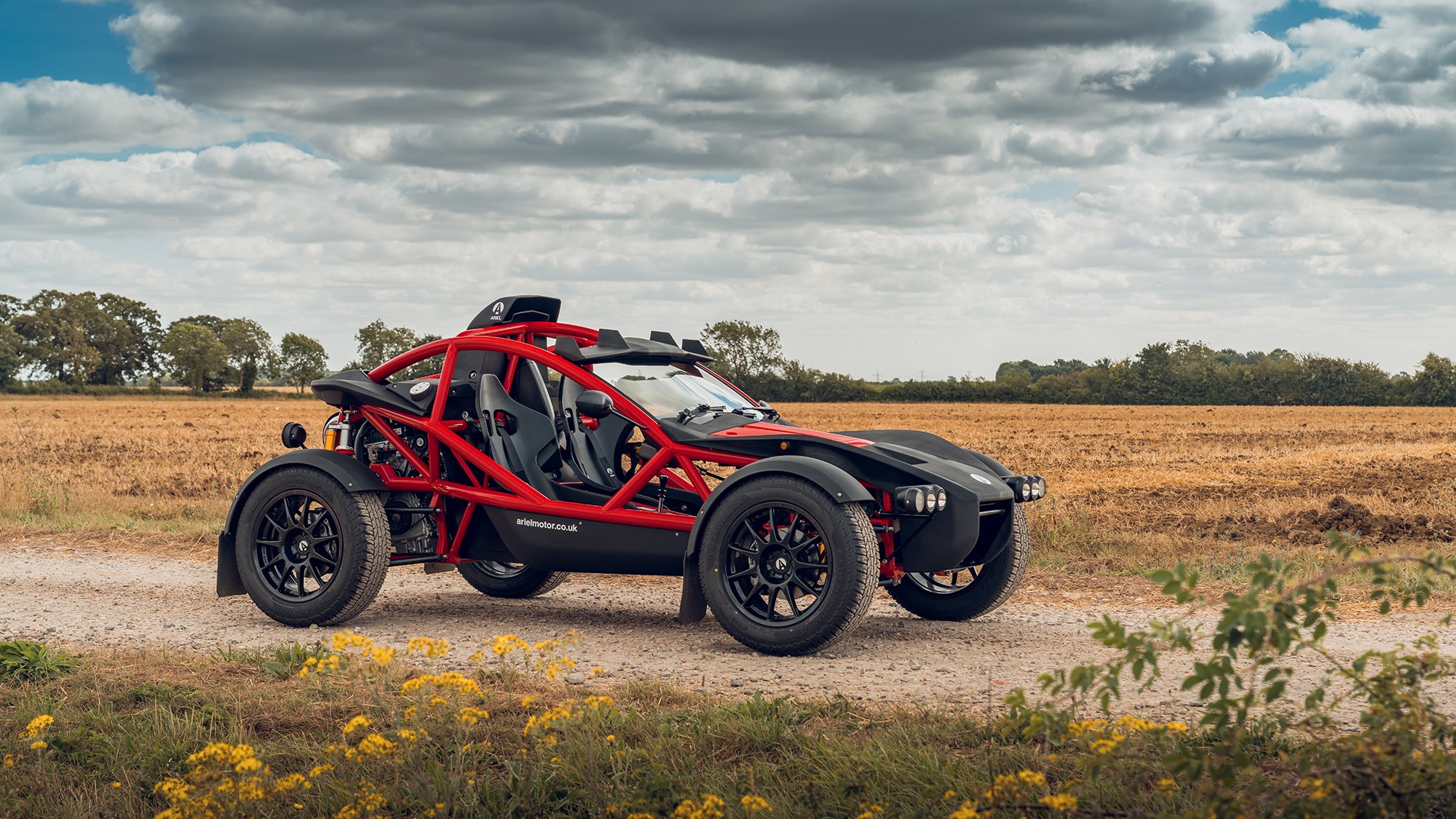
What are the specs?
The red car tested here is Ariel’s first road-biased demonstrator, distinguished by the three-stage adjustable ECU map which can take the car from 260bhp/284lb ft through a mid-ranking 302bhp/333lb ft to an all-out performance tune of 305bhp/382lb ft. It’s a £1800 option controlled by a switch in front of the steering wheel, although the middle setting was disabled on our test car.
The Ford Ecoboost lump is mounted amidships in what is a remarkably short package: at just 3.4 metres long, the Ariel Nomad is considerably shorter than most superminis and city cars, making it easy to place on the road. There is no rear-view mirror, but two door mirrors on stalks are angled to look straight back, replicating rearward visibility and, once on the road, you rarely struggle to place the car with confidence. A reversing camera on the crisp new TFT digital read-out is welcome for parking manoeuvres.
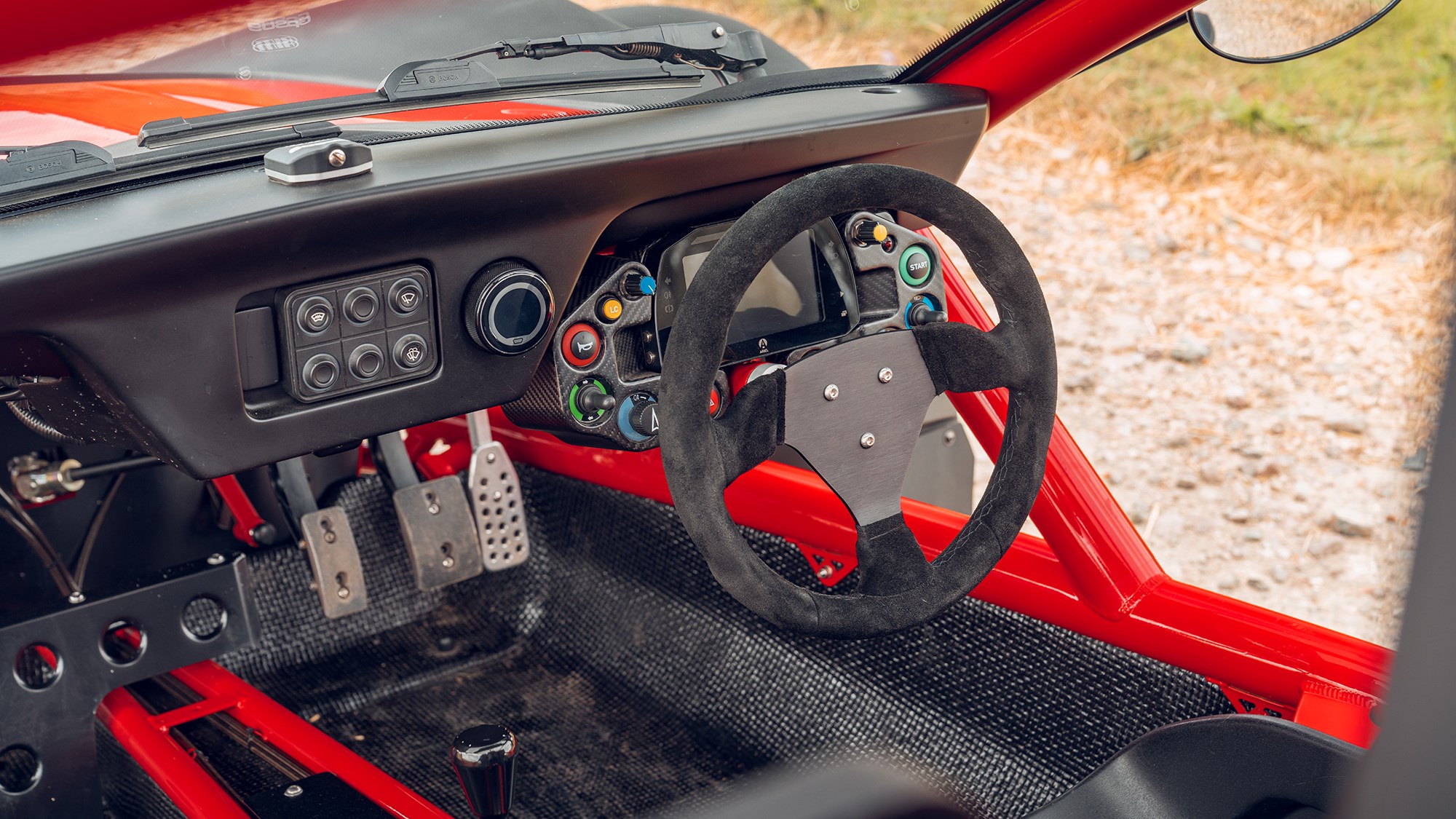
All that thrust is sent to the rear wheels via a six-speed close-ratio gearbox. Our car wore the road-biased 18-inch wheels shod in Yokohama’s ‘milder’ Geolandar all-terrain tyres. Later this autumn the fully off-road spec Nomad will be unveiled, with smaller 16in alloys, knobblier desert-ready rubber and overlanding paraphernalia such as winches, light bars and lockable diffs. The personalisation on offer is mind-blowing with more than 100 options; Siebert-Saunders vows that no two Nomads are quite the same.
How does it drive?
You must recalibrate your senses to drive the Ariel Nomad. It’s unlike anything else you’ve ever tested. The driving position is remarkably comfortable, the hard-shelled seat utterly supportive. The 305mm suede steering wheel is delightful, right-sized and jiggles in your hands like an early Elise’s to key you into the tarmac beneath your wheels. There’s no assistance to corrupt the feel.
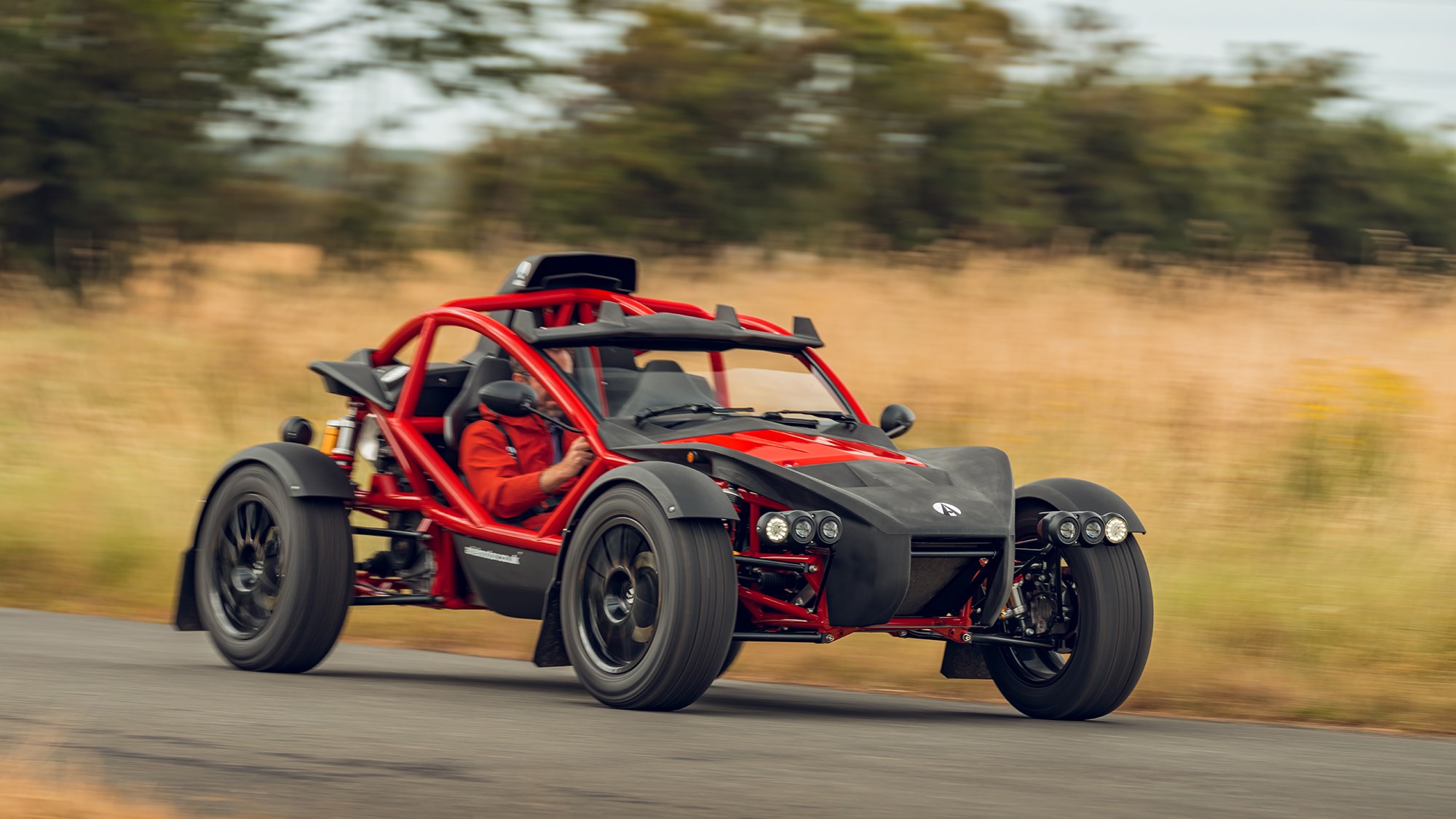
It’s remarkably docile at start-up, the engine firing first time, every time, after a prod of the button on the console. This is a freer-breathing exhaust than you’ll find on a Focus ST and it sounds burbly and potent, though hardly musical. The drivetrain is surprisingly tractable and there are few heroics required to manoeuvre around town (where this car will snap more necks than your average supercar), but the Nomad’s natural habitat is out in the wilds.
So we head over to some of our favourite B-roads and up the pace to see what the Nomad is made of. It’s a joy to pilot the Ariel along Cambridgeshire’s kinking country roads, the cockpit open to the scent of each field and dusty combine harvester we pass, the front wheels bobbing and twisting to every input from asphalt and steering. Long trailing mudflaps prevent the worst of flying stones, but I’d recommend goggles for full eye protection.
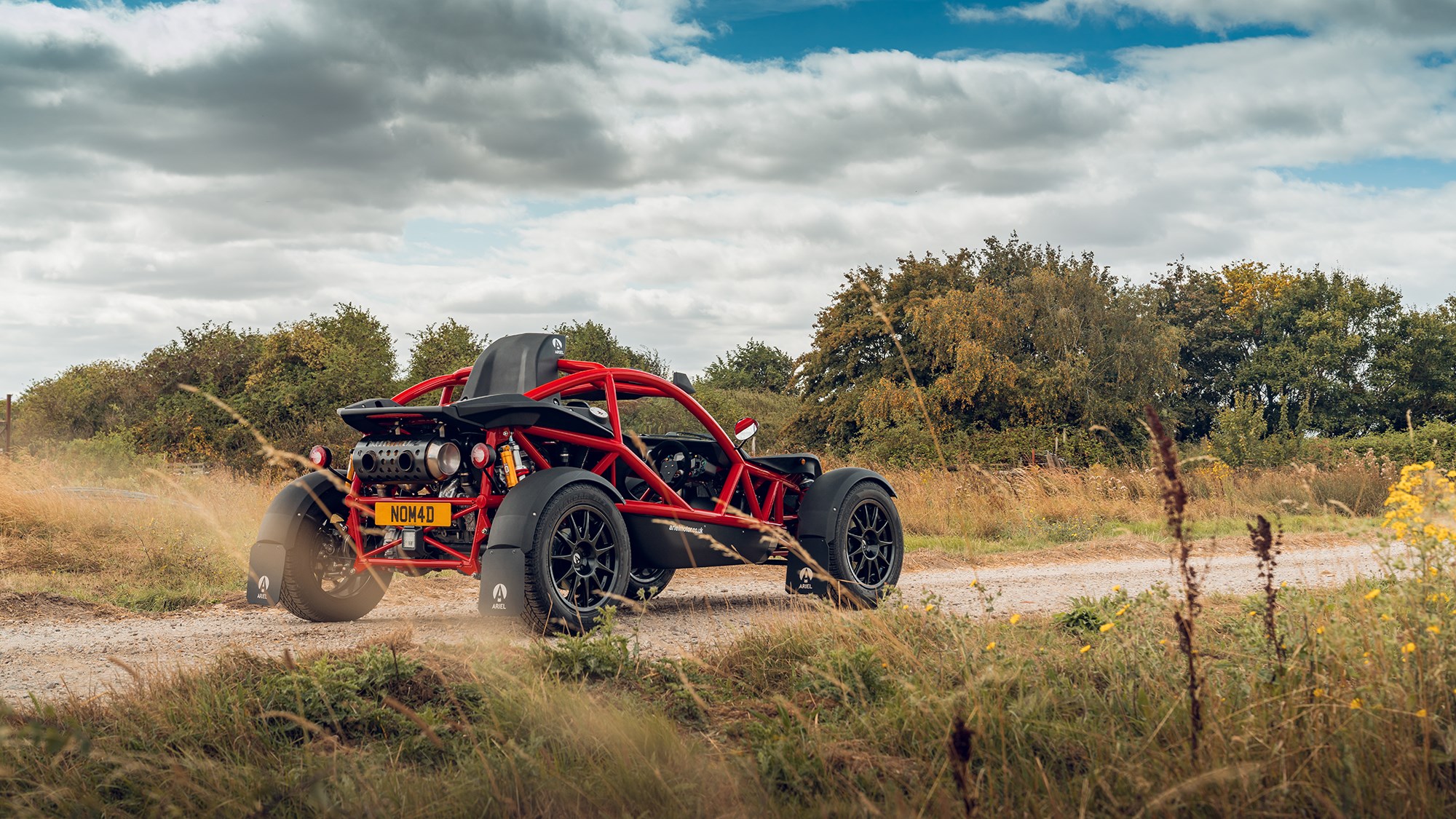
The suspension is soft and long of travel, allowing the Nomad to lean in corners and you quickly start exploiting the balance inherent in the chassis, while remembering the mid-engine layout and short wheelbase. Acceleration is visceral, even in the lowest power setting – this thing weighs just 715 kilos, remember, and 0-60mph is dispatched in 3.4sec – and the combination of fizzy boost, pleasingly mechanical gearchange and instant thrust makes this a lot of fun to pedal fast. The six-speed ‘box is effective and easy to use, though reverse can be a fiddle to select first time; the soundtrack at a higher tempo is full of pops and wheezes and bangs, a celebration of combustion in all its aural splendour.
Just remember that the unassisted brakes need a surprisingly hard prod to trigger effective retardation. We didn’t get the chance to test the cockpit-adjustable front:rear brake balance during our test.
What’s the interior like?
This is a cockpit unlike any other you’ve tried before. Entry is even harder than climbing in to a Caterham and its ilk and your chosen style will very much depend on your level of flexibility and youthfulness. I preferred a side entry, hauling my legs in first, swinging off the top bar and sliding in, but Siebert-Saunders recommends the full roof vault, as I gamely demonstrate below.
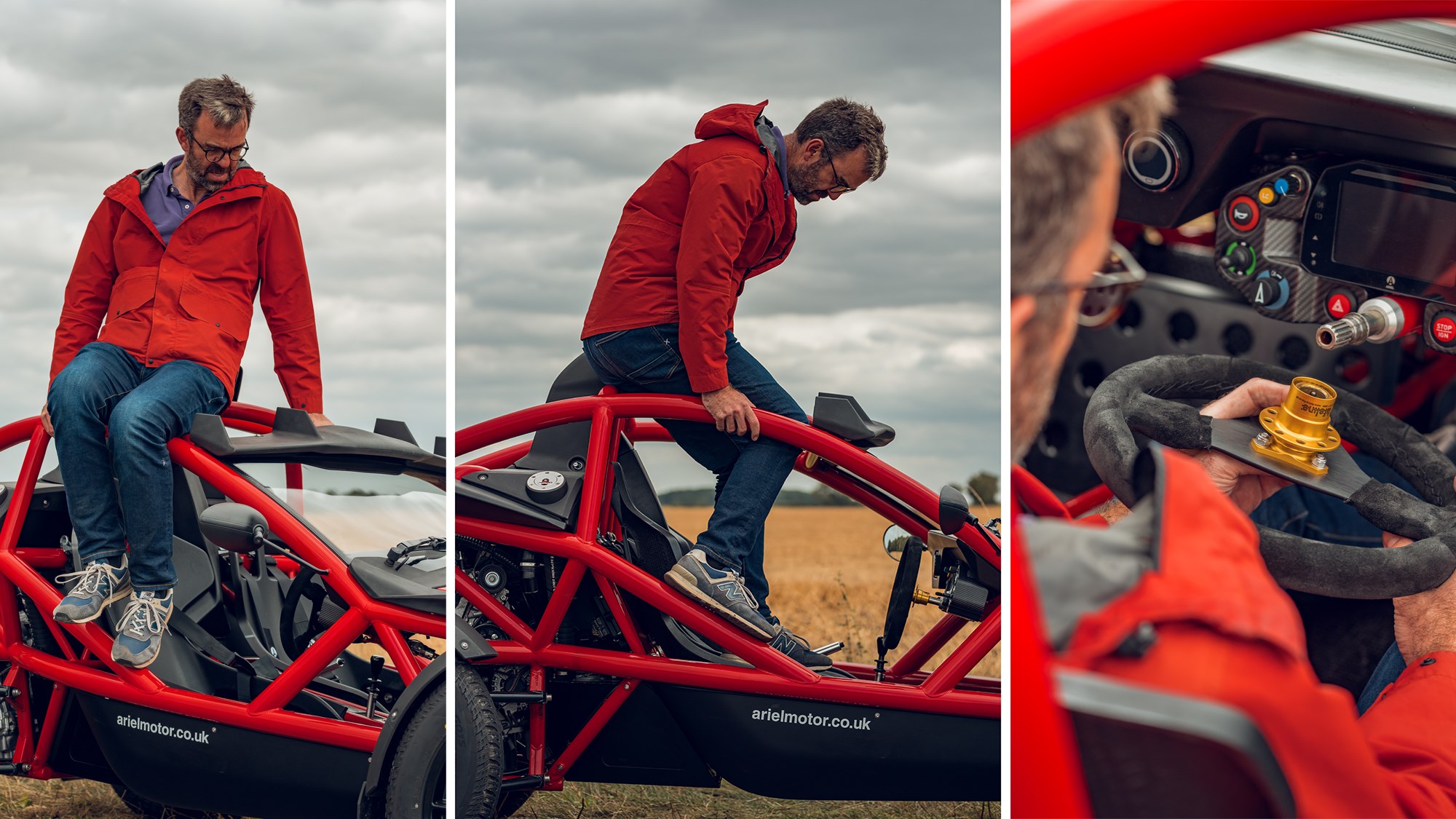
‘You can stand on any part of the chassis that’s painted red – many people prefer to drop in vertically,’ he says. The boss references the keyless entry and ignition, so the key can remain in your pocket.
Once installed, it’s the rawest car interior imaginable: focused, minimalist and yet surprisingly comfortable. The moulded seat adjusts, but you’ll need an allen key, and once in position everything falls to hand perfectly. The Tilton racing pedals are well placed and it’s a cinch to rev-blip the Ecoboost engine on the downshift.
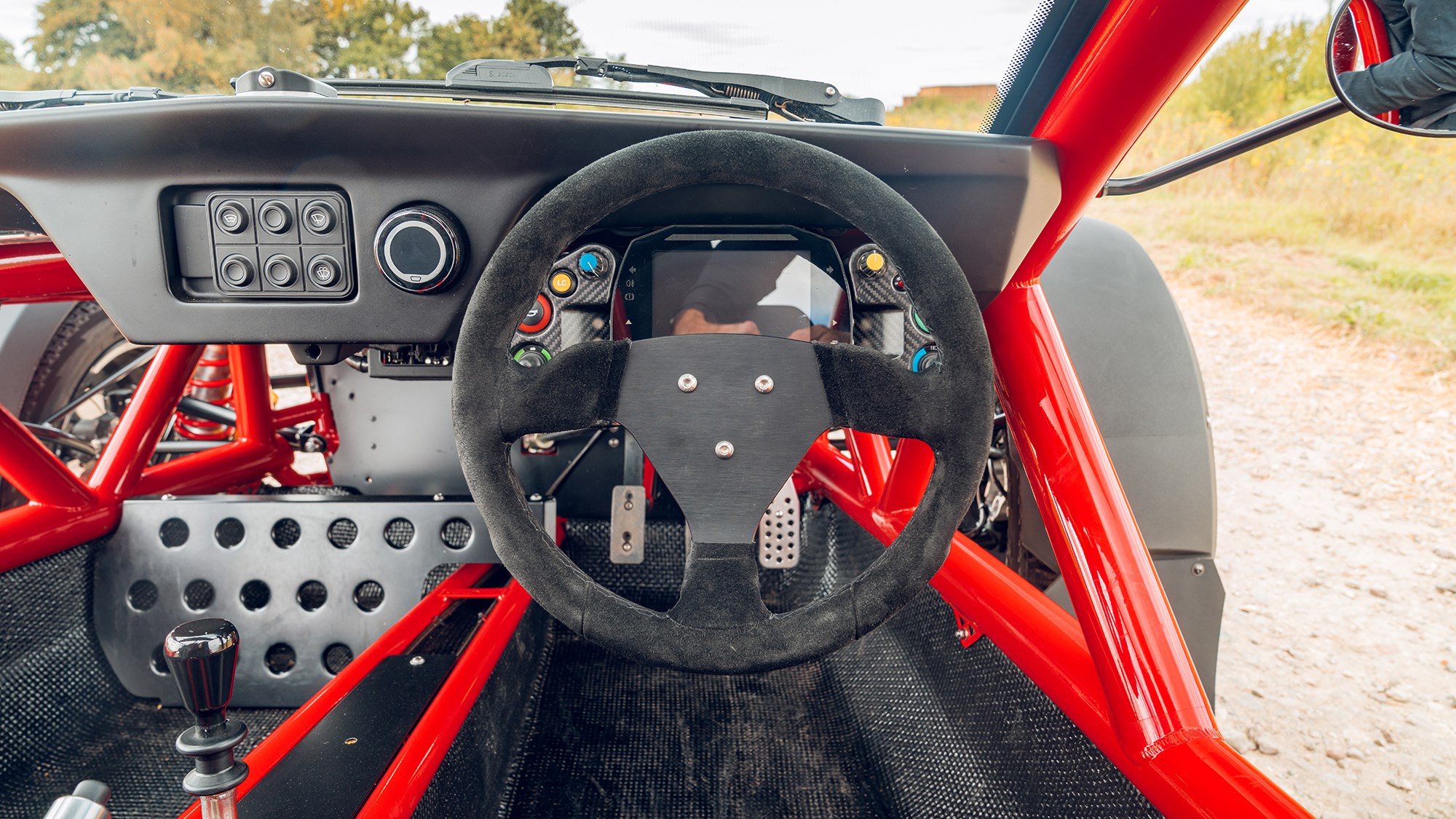
Particular mention to the instruments, often one of the failings of low-volume cars of this ilk. Ariel has fitted a small but superb colour TFT screen which shows all the data you need on the move, but can flick to a very detailed reversing camera at low speeds. Get used to the left-right turn signal flick-switch, repositioned to fall just where you might expect an indicator stalk by your left hand. Just remember to switch it off after each junction, as it won’t self-cancel.
There are two downsides to this visceral experience that we must mention: with no doors and hardly any bodywork to speak of, occupants are incredibly exposed to the elements. It is properly windy in here, even at quite modest speeds – you’ll need extra layers of clothing to keep warm and dry. There is no roof and nor is there any heating, though Ariel does offer 30-amp wiring for motorbike-style plug-in clothing for those who drive their cars all year round. They’re hardy souls, Ariel folk…
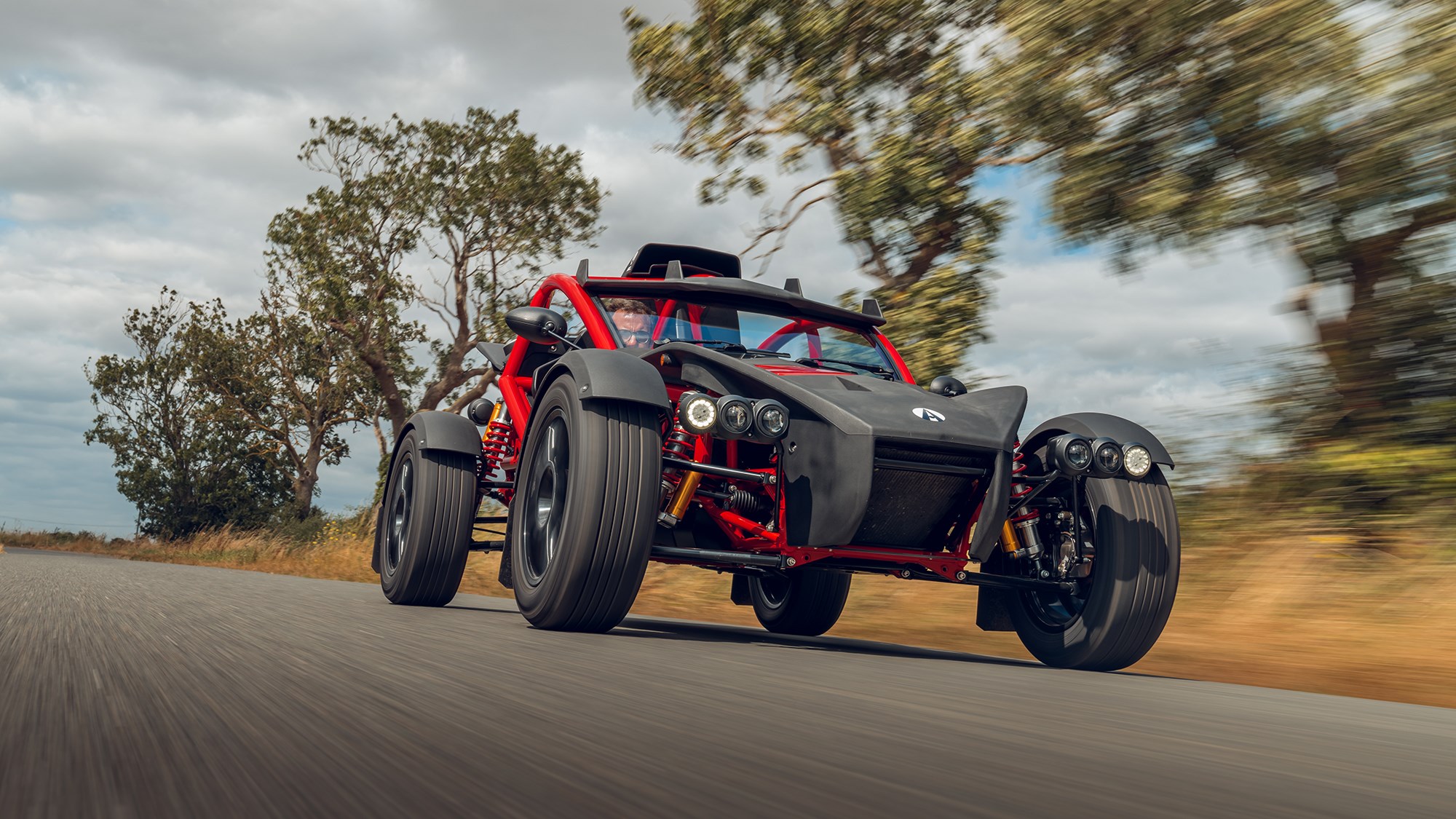
The other more prosaic pain is the four-point full harness. It’s designed to keep you safe, should the worst happen, but it’s a bit of a pain to get in and out, if we’re being honest. One welcome new innovation is the removable steering wheel, which clips off to make access easier. It works well.
Before you buy
Buying a car like the Ariel Nomad 2 is a very personal choice and Siebert-Saunders admits that this is a car that people typically keep for three to four years.
‘Over a decade, our cars will typically have two or three owners,’ he muses. Customers are very loyal and a high level of interest comes from Ariel Atom owners wanting a fresh experience with a more off-roady vibe.
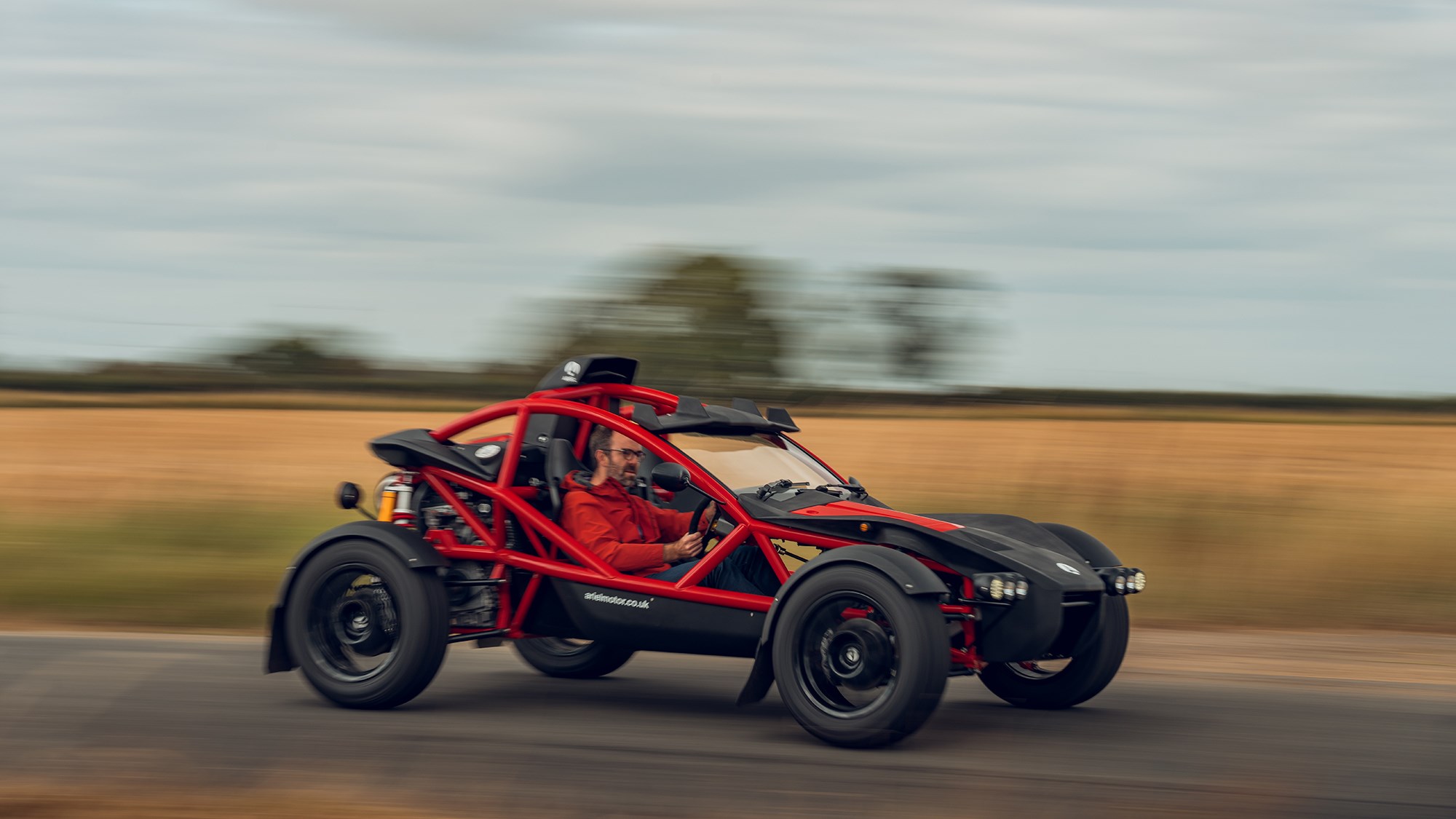
The main decision facing prospective owners is whether to tailor their car more for on-road or off. The core car comes with everything needed for daily use, and ours was upgraded with the limited-slip differential, adjustable traction control, four-pot AP Racing brakes and 18-inch wheels. Luggage panniers and motorbike sat-nav are all on the extensive options list.
Slap on the necessary off-road accoutrements – hardcore, grippy tyres, the Bilstein three-way adjustable dampers (instead of the road-focused Ohlins ours had), the extra underbody bracing, winch and lights – and you’ll have a car that’ll go practically anywhere. Its 48deg approach and 64deg departure angles demonstrate the mind-boggling, mountain-goat versatility of this extraordinary car.
Verdict: Ariel Nomad 2
The Ariel Nomad is an easy vehicle to fall for. Its sense of fun is off the scale and it makes no bones about its purpose in life. Just look at it: this is not a car designed to pop down the shops in, but its compact beach-buggy footprint and ease of use means that it can actually drop into daily chores with merry abandon.
But really you’ll want this car for its ability to thrill, on road and off, and it performs this duty supremely. The quality of engineering is staggering at the cost and, priced from £68k at launch in 2024, we’d say it’s even something of a bargain, considering that Ariel Motors only manufactures around 100 cars a year, half of which will be the Nomad. Exclusivity, thrills galore and a madcap sense of fun come no finer than this.